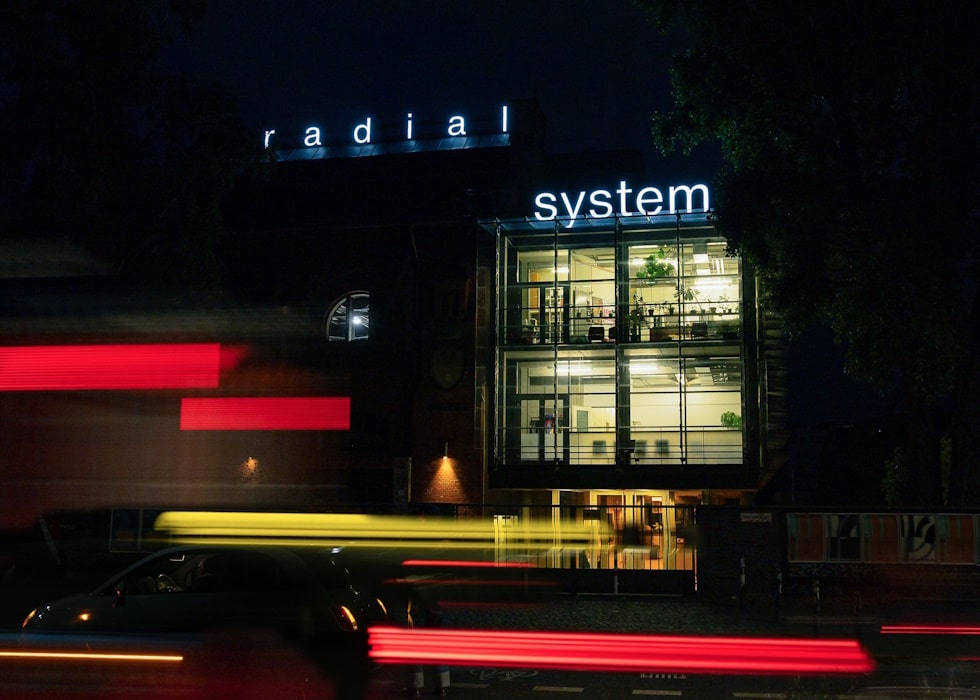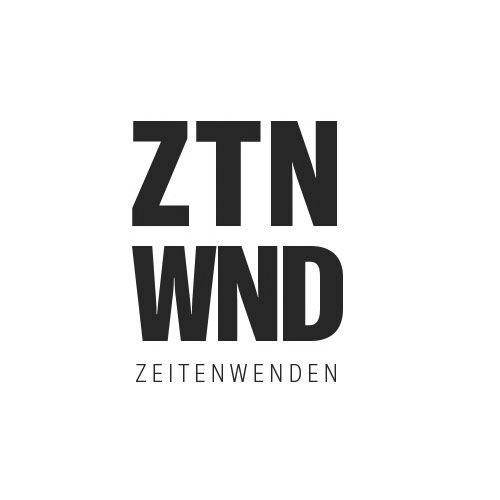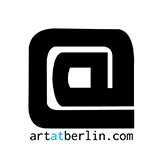Since the summer of 2025, anyone walking along Berlin’s Holzmarktstraße along the Spree at dusk will notice a new artistic accent in the urban landscape: on the façade of the Radialsystem, a two-part lettering pulsates with light, breathing and constantly changing. ‘r a d i a l system’. As simple as it is concise, the work describes what it makes visible: the place itself. In doing so, the work touches on a dimension that extends beyond the building. It explores how art in urban spaces can draw attention and create connections.
Image above: Mischa Kuball, r a d i a l system, Radialsystem, Berlin, 2025 © Photo: Kevin Fuchs, Berlin
Permanently installed since July 2025, the work of internationally renowned Düsseldorf-based conceptual and light artist Mischa Kuball marks a new moment in the history of the building. According to the artist, this is not a classic commissioned project, but rather an artistic statement that emerged from an ongoing dialogue between Kuball and Matthias Mohr, the artistic director and – since 2024, together with Merit Vareschi – managing director of Radialsystem. The installation can thus be seen as the result of a dialogue about visibility, public space and the spirit of this special place.
Moving and emotive
Kuball’s light art has been committed to public spaces for decades. For him, light acts as a medium that makes social relationships visible and allows spaces to be reinterpreted. He also pursues this approach at Radialsystem: the installation does not respond to external parameters, but follows an internal logic of movement that relates to the outside world. The letters interact in subtly shifted tempos, creating a fragile, living topography of light.

The effect extends beyond the architecture into the urban space. The lettering appears when approaching from Holzmarktstraße or Ostbahnhof, or from the S-Bahn line. This not only illuminates the Radialsystem, but also marks it as a dynamic and inspiring place of encounter and exchange.
Architecture in transition, light as a sign of connection
The Radialsystem looks back on an eventful history. Built in 1881 as a pumping station on the River Spree and constructed in the traditional brick architecture of the Mark Brandenburg, it originally served the city’s infrastructure. With its conversion in the 2000s, the site was transformed into a cultural centre that is now one of the most influential production and performance venues for dance, music and interdisciplinary formats.
In this tension between post-industrial heritage and contemporary art, Kuball sets his installation as a precise visual statement. The illuminated lettering is not signage, but intervention: a kinetic light object that keeps frequencies, brightnesses and rhythms in constant motion. Kuball describes this form as a ‘light body with its own temporality’. In keeping with Mischa Kuball’s artistic practice, in which light serves as a medium for social discourse and aesthetic intervention, the installation also sees itself as a visual practice of communication – open, in motion and establishing relationships.
Emerging from an artistic discourse
The fact that the installation arose from a dialogue between Mischa Kuball and Matthias Mohr shapes its character. Mohr, a German-Colombian dramaturge and curator, has been responsible for the artistic direction of Radialsystem since 2018 and pursues a clear stance: to understand the building as an open space for thought and action that brings together different aesthetics, experiences and perspectives. This openness also shaped the conversation with Kuball. It was a process that did not arise from a formal commission, but from a joint reflection on the role of the building in the urban space.
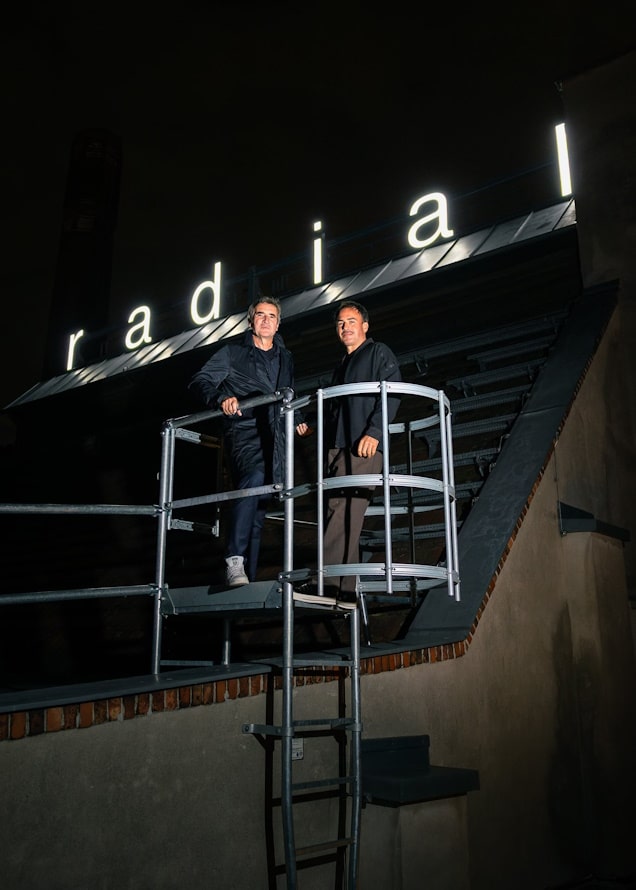
The installation was made possible financially by a designated donation and investment funds from the Berlin Senate Department for Culture and Social Cohesion.
The work, which was officially inaugurated and illuminated for the first time on 25 July 2025, oscillates between ‘art in architecture’ and a sensory experience in public space. Since then, the installation has been permanently active and unfolds its strongest effect in the border area between daylight and the darkness of night. It functions as a landmark without being one: lettering that does not explain, but opens up; a light that does not dazzle, but creates relationships.
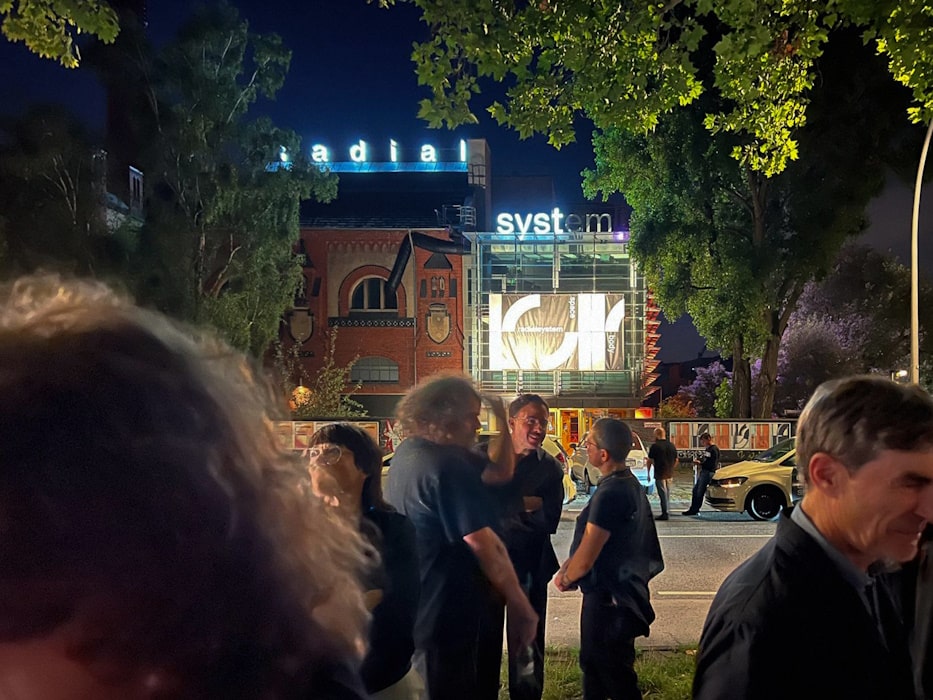
Against the backdrop of a city in flux and motion, Mischa Kuball’s light installation shows how art can further open up public space. It is an invitation to engage with what becomes conceivable when light speaks to us.
About the artist
Mischa Kuball (born in Düsseldorf in 1959) is a conceptual artist and counts among the most influential figures in light art in Germany. Since 1977, he has been working in public and institutional spaces, using light as a medium to make architectural structures, social dynamics and political discourses visible. His projects range from architectural interventions to participatory works in which the boundaries between public and private space are deliberately dissolved.
Kuball has been Professor of Art in Public Space at the Kunsthochschule für Medien Köln (> Academy of Media Arts Cologne) since 2007; prior to that, he taught media art at the Hochschule für Gestaltung/ZKM Karlsruhe (> Karlsruhe University of Arts and Design/ZKM Karksruhe) from 2006 to 2008. In 2015, he was admitted to the Nordrhein-Westfälische Akademie der Wissenschaften und der Künste (> North Rhine-Westphalian Academy of Sciences and Arts), and in 2016 he was awarded the Deutscher Lichtpreis (> German Lighting Prize). He lives and works in Düsseldorf.
Text + translation: Stephanie Schneider, M.A.
WHERE?
Radialsystem
Holzmarktstraße 33
10243 Berlin-Friedrichshain


